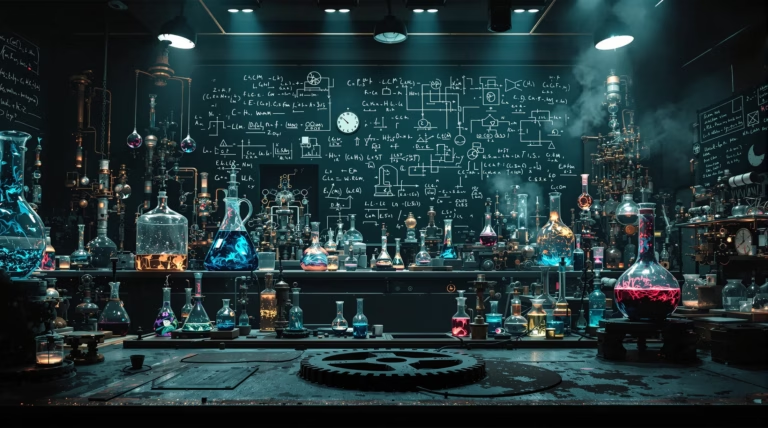Quality Engineer: Roles, Responsibilities, and Skills Explained
In today’s rapidly evolving industrial landscape, Quality Engineers play a pivotal role in ensuring product excellence and maintaining high standards across various sectors. Whether you’re considering a career in quality engineering or looking to collaborate with these professionals, understanding their comprehensive role and skill set is essential for success in modern manufacturing and service industries.
Understanding the Role of a Quality Engineer
A Quality Engineer serves as the guardian of product and service excellence within an organization. They implement robust quality management systems to ensure that everything delivered to customers meets or exceeds established standards. Working at the intersection of engineering and quality assurance, these professionals blend technical expertise with analytical skills to prevent defects rather than simply detecting them after production.
Quality Engineers impact virtually every aspect of business operations, from initial material handling through manufacturing processes to addressing warranty claims from customer feedback. Their broad influence allows them to drive improvements in both product quality and operational efficiency. By establishing methodical approaches to quality control, they help organizations reduce waste, minimize rework, and ultimately enhance customer satisfaction and brand reputation.
Key Responsibilities of a Quality Engineer
Quality Engineers shoulder several critical responsibilities that directly influence an organization’s success.
- Developing comprehensive quality management systems aligned with internal specifications and external regulations
- Creating detailed documentation and establishing quality metrics
- Implementing verification procedures throughout the product lifecycle
- Designing rigorous test protocols to identify potential defects
- Analyzing quality data through statistical methods
- Collaborating with cross-functional teams to integrate quality standards
- Maintaining meticulous records of quality-related activities
- Educating employees on quality standards
Daily Tasks and Industry Variations
| Industry | Primary Focus Areas |
|---|---|
| Manufacturing | Statistical process control, production line inspections |
| Pharmaceutical | FDA requirements, Good Manufacturing Practices (GMP) |
| Software Development | Automated testing frameworks, code quality verification |
| Automotive | IATF 16949 compliance, safety standards |
| Aerospace | Stringent safety requirements, reliability testing |
Essential Skills for Quality Engineers
Successful Quality Engineers possess a diverse skill set that enables them to maintain product excellence and drive continuous improvement. These professionals combine technical expertise with interpersonal abilities to influence quality standards across their organizations. Effective Quality Engineers balance analytical precision with collaborative problem-solving to identify issues before they impact production or reach customers.
Technical Skills: Tools and Techniques
- Quality management systems (ISO 9001, AS9100, IATF 16949)
- Statistical process control (SPC)
- Root cause analysis techniques (8D, 5-Why, Fishbone diagrams)
- Quality improvement methodologies (Six Sigma, Lean, DMAIC)
- Quality software tools for data analysis
- Documentation management systems
- Automated testing frameworks
Soft Skills: Communication and Problem-Solving
- Clear and effective communication across all organizational levels
- Diplomatic approach to addressing quality issues
- Analytical thinking and creative problem-solving
- Adaptability to changing requirements
- Cross-functional team collaboration
- Leadership abilities in quality advocacy
- Change management expertise
Quality Assurance vs. Quality Control
While often used interchangeably, quality assurance (QA) and quality control (QC) represent distinct approaches in quality management. Quality assurance focuses on preventive activities, establishing systematic processes to ensure quality standards are met before production begins. Quality control, conversely, involves reactive measures that evaluate finished products to identify and correct defects.
This timing and approach difference creates a complementary relationship between the disciplines. Quality assurance builds defect prevention systems, while quality control verifies their effectiveness. Most organizations implement both strategies within their quality management systems, with Quality Engineers overseeing both functions to create multiple layers of quality protection.
Maintaining Standards with Quality Assurance
- Standardized workflows implementation
- Detailed documentation development
- Systematic training programs
- Comprehensive test plans
- Risk assessment procedures
- Validation protocols throughout product lifecycle
- Integration of quality considerations in initial designs
This preventive mindset shifts quality responsibility upstream, reducing costly errors and rework while fostering a culture where quality becomes everyone’s responsibility rather than a final checkpoint.
Inspecting Products with Quality Control
| QC Component | Function |
|---|---|
| Sampling Plans | Systematic product selection for inspection |
| Measurement Systems | Calibrated equipment for accurate testing |
| Defect Classification | Categorization of non-conformities |
| Statistical Analysis | Data-driven evaluation of inspection results |
| Documentation | Recording of non-conformities for corrective action |
While QC activities occur later in the production cycle than QA initiatives, they provide essential feedback that drives continuous improvement by highlighting process weaknesses requiring attention.
Tools and Techniques Used by Quality Engineers
Quality Engineers employ diverse methodologies and instruments to maintain product integrity throughout development. They combine traditional quality control approaches with cutting-edge analytical tools to systematically identify, measure, and eliminate manufacturing process variations. These specialized tools transform raw data into actionable insights driving continuous improvement initiatives.
Statistical Tools for Quality Analysis
- Design of Experiments (DOE) for systematic variable testing
- Statistical Process Control (SPC) with visual control charts
- Regression analysis for relationship identification
- Hypothesis testing for data validation
- Analysis of Variance (ANOVA) for factor isolation
- Probability models for performance prediction
- Yield forecasting methodologies
FMEA and Risk Management
Failure Mode and Effects Analysis (FMEA) serves as a cornerstone risk management tool, enabling systematic identification of potential failure points before production impact. Quality Engineers facilitate cross-functional FMEA sessions to evaluate components and processes, assigning risk priority numbers based on severity, occurrence, and detection capability.
- Fault Tree Analysis (FTA) for failure pathway visualization
- Hazard Analysis and Critical Control Points (HACCP)
- ISO 9001:2015 risk-based thinking integration
- Proactive risk identification protocols
- Resource allocation optimization
- Control measure prioritization
The Importance of Continuous Improvement
Continuous improvement serves as the cornerstone of effective quality engineering, providing organizations with a structured approach to consistently enhance their processes, products, and services. Quality Engineers champion this methodology to help their organizations adapt to changing market conditions, meet evolving customer requirements, and maintain competitive advantage in increasingly demanding industries.
Organizations that embrace continuous improvement develop resilience and agility that static quality systems cannot provide. Through systematic approaches like Kaizen, PDCA (Plan-Do-Check-Act), and other improvement methodologies, Quality Engineers create environments where quality becomes everyone’s responsibility rather than the domain of a single department.
Implementing Continuous Improvement Strategies
- Developing clear baseline assessments of current processes
- Establishing objective metrics for progress tracking
- Prioritizing improvements based on potential impact
- Aligning resources with meaningful value creation
- Building engagement through training and communication
- Recognizing improvement contributions
| Methodology | Primary Focus |
|---|---|
| Lean Principles | Waste elimination and process streamlining |
| Six Sigma | Variation reduction through statistical analysis |
| DMAIC Framework | Structured approach for complex improvements |
| Kaizen Events | Rapid, focused improvements in specific areas |
Quality Engineer’s Role in Compliance and Audits
Quality Engineers serve as the critical link between regulatory bodies and internal processes, translating complex requirements into actionable quality systems. They develop and maintain documentation systems that demonstrate adherence to industry-specific regulations while establishing comprehensive audit schedules and preparing organizations for external assessments.
Conducting ISO Audits
- Developing audit protocols aligned with specific ISO standards
- Maintaining expertise across applicable standards
- Implementing systematic evaluation approaches
- Balancing thoroughness with diplomatic communication
- Training internal audit teams
- Coordinating certification processes
Vetting Supplier Quality
| Evaluation Component | Purpose |
|---|---|
| Qualification Questionnaires | Initial capability assessment |
| On-site Audits | Direct process verification |
| Performance Reviews | Historical quality tracking |
| Supplier Scorecards | Ongoing monitoring of key metrics |
| Corrective Action Systems | Issue resolution and prevention |







